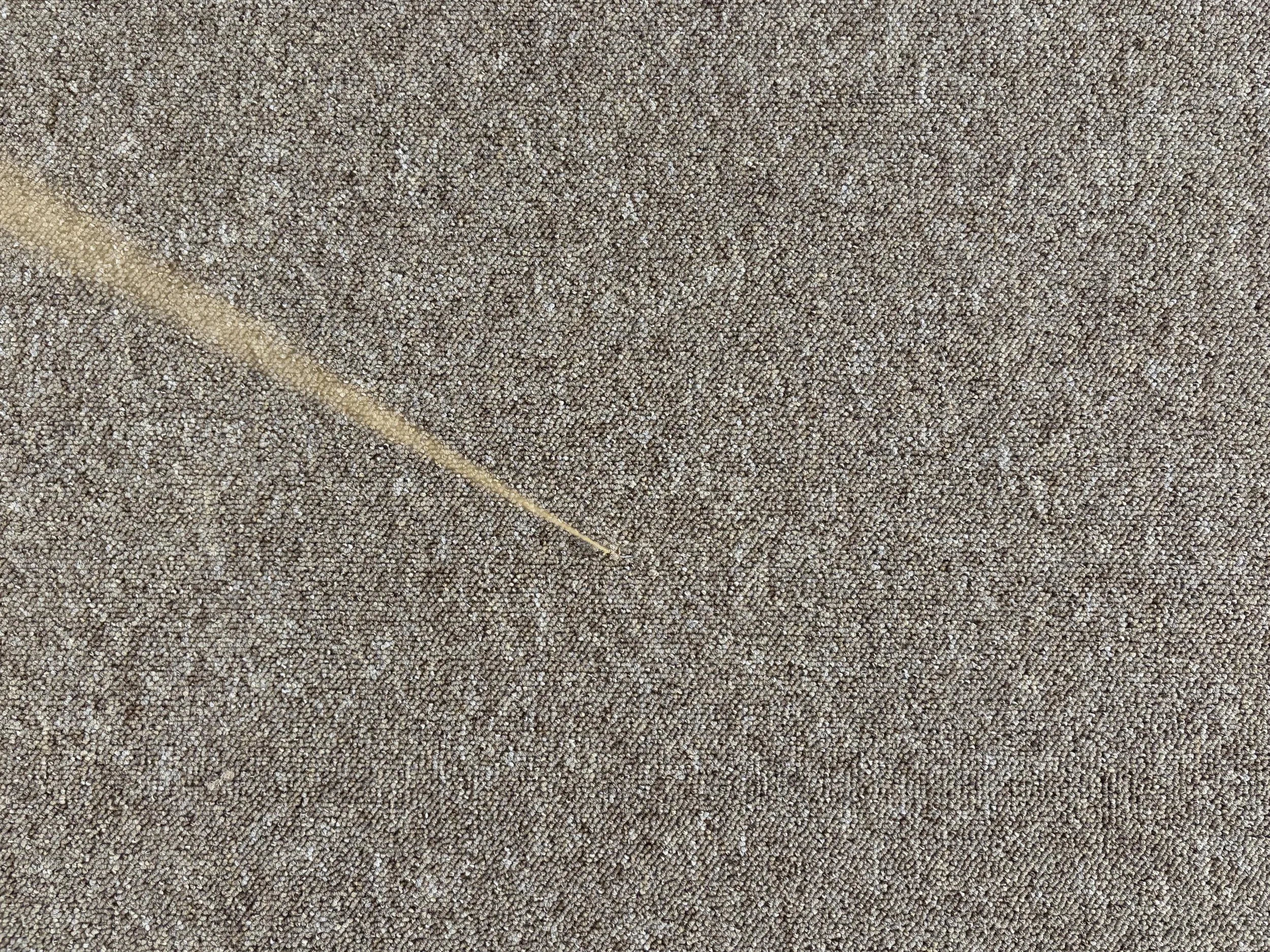a clearing (notion), 2025
carpet and dyed string - turmeric, coffee, and black tea
Das Institut für Alles Mögliche, Berlin, Germany
An intangible interior, not a void or emptiness, but an expression of the spatial environment, reveals that a room maintains along the cusp of materials and structural lines. The floor, carpeted, captures a moment of pause, as if habitation has been temporarily suspended in a tableau of stillness. Understanding the composition of a single dwelling and the continuity embedded within its fabric is to reflect back onto ourselves.
The delineation of a boundary between the superficial notion of a house and the profound reality of a home is articulated through subtle irregularities and imperfections that punctuate the interior —cracks in drywall, uneven flooring, mismatched paint hues—each serving as a testament to the human agency involved in the ongoing act of inhabitation. These imperfections are not merely flaws but embody the inherent temporality of a lived-in environment.
The concept of 'lines'—as the sonic timbre of a situation—operates as a conduit for the flow of thought, perception, and structural coherence within the space. These lines, both literal (e.g., architectural joints, drafts, and fractures) and metaphorical (e.g., boundary negotiations, the passage of time), allow for the dynamic weaving and distortion of spatial and experiential elements, generating a complex interplay between stability and flux.
This ongoing process of transformation is exemplified in the stage of construction referred to as the “stud forest.” At this phase, the building subsists solely as an architectural skeleton—an assembly of framing members and structural timber—standing freely within its nascent form. The act of navigating through the wall framework, making doorways, and creating openings echoes the movement found in natural forests, where the act of weaving and meandering through dense growth is to experience the environment fully.
Through an expanded framework, the interrelationship between the raw, skeletal form of a house and its eventual transformation into a home becomes a continuous dialogue between materiality, human intervention, and temporal flow. Seeing space not merely as a static container but as a living, evolving entity—one that is perpetually shaped by the movements, imperfections, and histories inscribed within its fabric.






